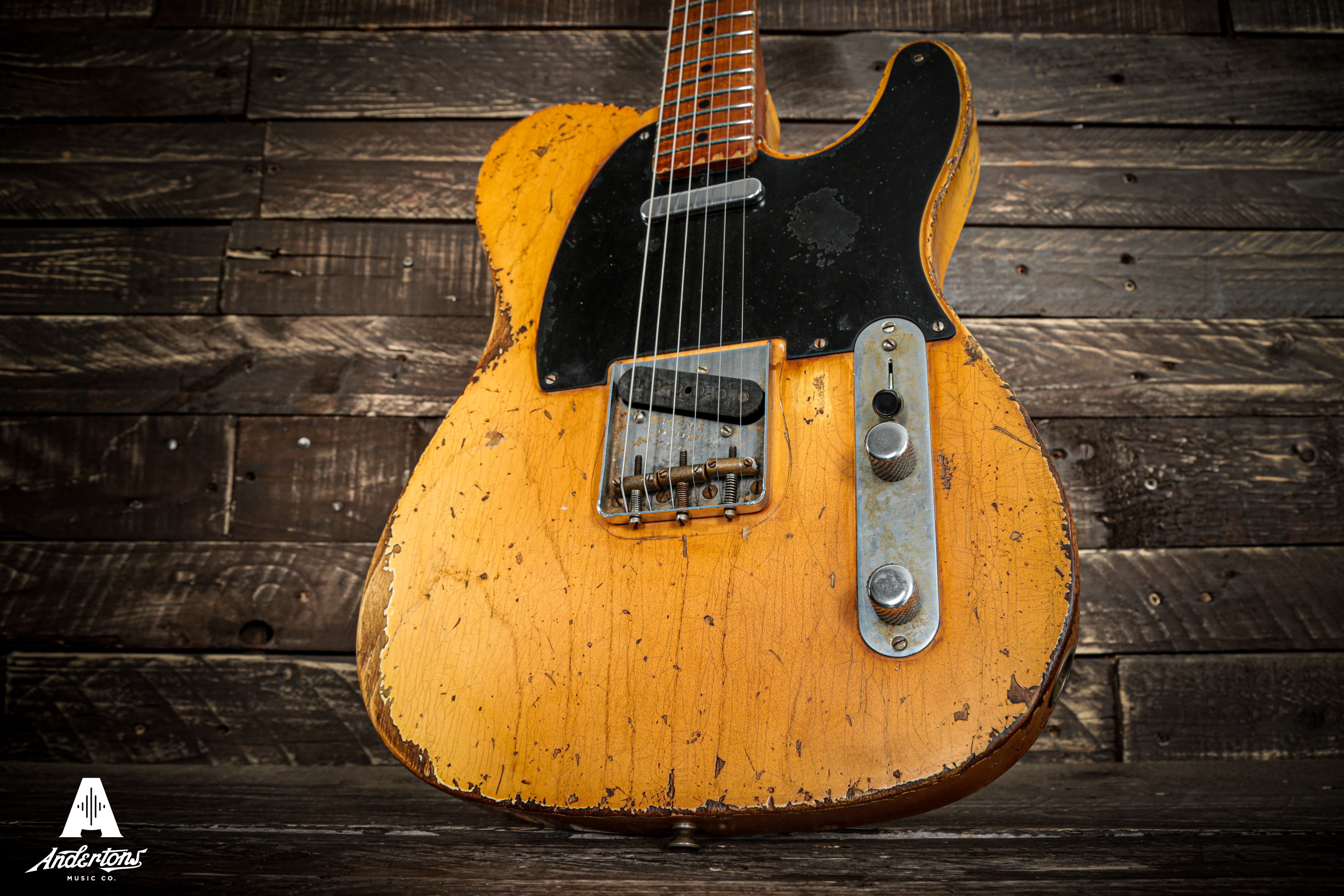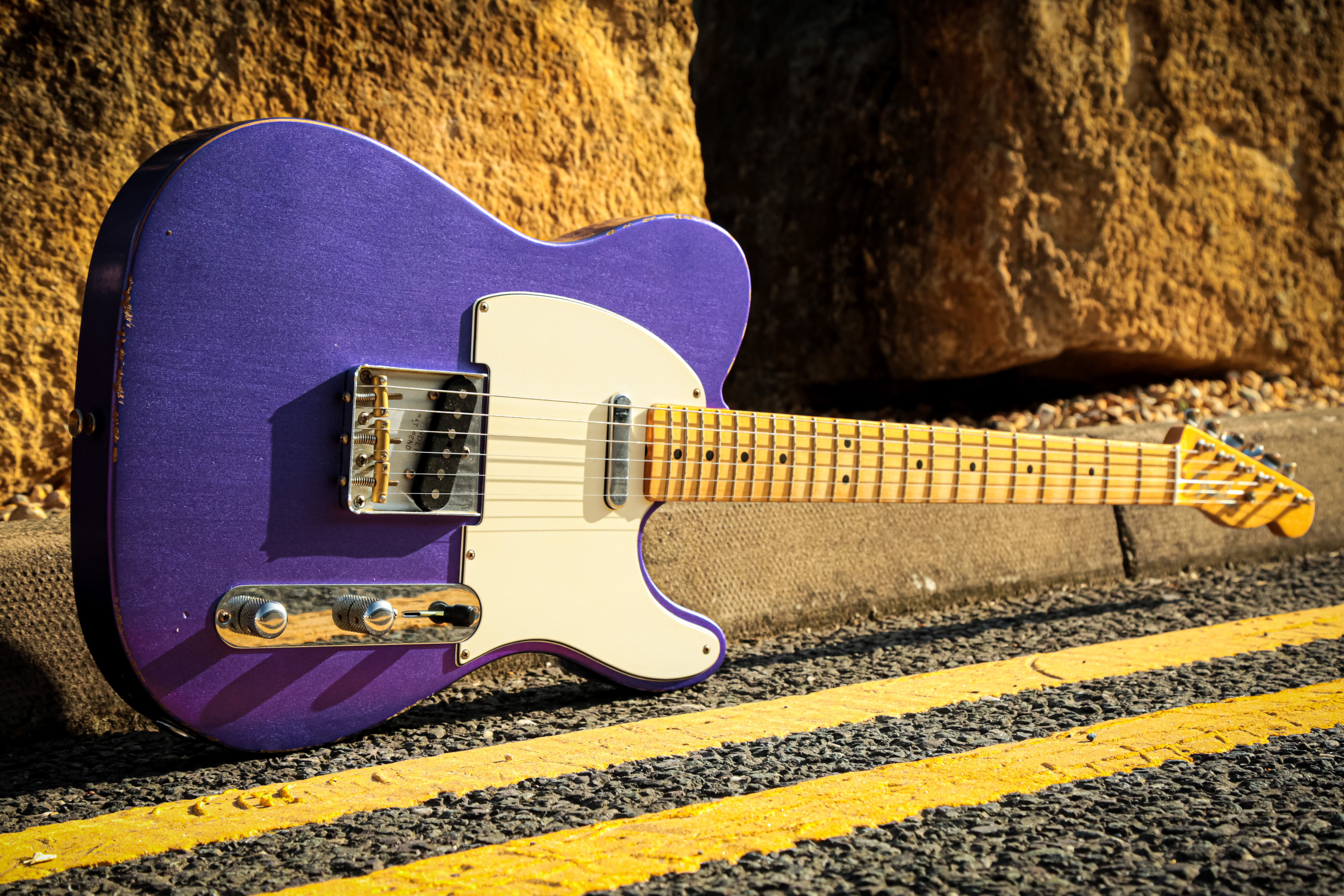- The Origins of the Fender Telecaster
- ‘50s Fender Telecasters
- ‘60s Fender Telecasters
- ‘70s Fender Telecasters
- Which Telecaster Era is Right For You?
- Fender Telecaster Ranges
- ’50s, ’60s and ’70s Fender Telecasters: FAQs
- Maple vs Rosewood Telecaster Fingerboard: Which Sounds Better?
- Want To Learn More?
The Fender Telecaster was the world’s first commercially successful solid-body electric guitar, and it still proudly holds its own today. As one of the most beloved and iconic instruments of all time. Loved by many for its crisp, cutting tone and stripped-back simplicity, the Tele has long been a favourite across plenty of different genres, including country, rock, funk, and punk. Quite simply, it isn’t a stretch to call the Telecaster one of the most beloved and iconic instruments of all time.
A lot about the Fender Telecaster has changed over the course of its fruitful existence, but one constant throughout its lifespan is that unmistakable single cut, T-style guitar silhouette. However, while the famous form has remained practically unchanged since the early ’50s, the Telecaster has undergone several subtle but important changes from decade to decade. From tonewoods and pickups to neck feel and circuitry, each generation has added a chapter to the Telecaster story.
In this guide, we’ll explore the differences between Fender’s ’50s, ’60s and ’70s Telecasters and check out what sets them apart, how they feel, and which one might be right for you.

The Origins of the Fender Telecaster
It wouldn’t be hyperbole to say that before the Telecaster, there was nothing quite like it. Fender launched the Broadcaster in 1950 as a revolutionary new electric guitar design: solid-bodied, bolt-on neck, and mass-producible. Due to a trademark dispute, the Broadcaster was briefly renamed the ‘Nocaster’ before finally taking on the Telecaster name in 1951.
The idea was simple enough: create a reliable, affordable, and great-sounding guitar that could withstand the rigours of touring and studio work. And thanks to its minimalist, no-nonsense layout, featuring a single-cutaway slab body, two single-coil pickups, and a straightforward control scheme, it didn’t take long for musicians to take the Tele into their hearts.
What it might have lacked in flash, the Telecaster more than made up for in reliability, versatility, and that characteristic twang. With a warm, almost jazzy, neck pickup and a bridge pickup that delivers a bright, biting tone that can cut through any mix, plenty of players saw the Tele’s potential, with country strummers, blues noodlers, and future rock idols all quick to adopt the humble guitar.
Fender Telecaster
‘50s Fender Telecasters
Following the trademark dispute with competitors Gretsch, Fender decided to refresh, rename and re-spec the original Broadcaster. The final outcome was the first recognisable Telecaster, which we all know and love today. The classic ‘Tele twang’ is a timeless sound that works brilliantly for pretty much everything, from pop through to rock and more niche genres, as well as providing a blank slate for intrepid guitar effects.
The secret ingredient to the ‘50s Tele tone is, of course, the single coil pickups. However, as variables like magnet type and number of windings hadn’t been standardised across the production line in the early days, each individual Tele sounded slightly different – so there was a bit of pot luck with which one you got to try out at the guitar store! That said, there were some typically Tele sounds that players could expect, including a warm, articulate and punchy sound, thanks in particular to the flat pole pieces. Additionally, early ’50s models featured the so-called ‘dark circuit’, which rolled off high end on the neck pickup to simulate a bassier tone. This was eventually replaced by a more traditional tone circuit later in the decade.
One aspect of the ‘50s Telecaster that some players find tricky to navigate at first is the chunky old-school U-shaped neck, which might feel a little on the thick side if you’re accustomed to a modern guitar setup. That said, many love the thicker neck shape filling out the palm of the fretting hand, and the rounded fretboard is ideally suited to fretting chords and big string bends.
‘50s Tele Key Features
- Ash wood body
- Maple neck and maple fretboard
- Two low-output single coil pickups
- 7.25-inch fretboard radius
- Deep ‘U’ shape neck pattern
- Three-saddle fixed ashtray bridge





.jpg?w=400&h=400&&fit=fill&bg=FFFFFF)





Responses & Questions